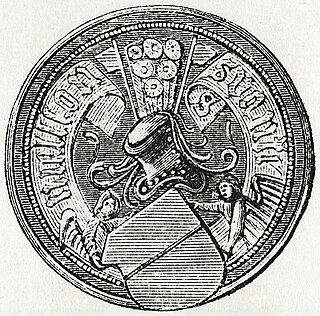Events

- 1460
- 5 March – The Treaty of Ribe returns Duchy of Schleswig to Denmark and makes Christian I Count of Golstein.
- (C.) 1465
- The Oldenburg Horn is created. [2]
1460s in Denmark |
| Other decades |
| 1440s | 1450s | 1460s | 1470s | 1480s |
Events from the 1460s in Denmark.

| | This section is empty. You can help by adding to it. (May 2016) |

Year 1520 (MDXX) was a leap year starting on Sunday of the Julian calendar.
The 1520s decade ran from January 1, 1520, to December 31, 1529.

Year 1536 (MDXXXVI) was a leap year starting on Saturday of the Julian calendar.

Year 1526 (MDXXVI) was a common year starting on Monday of the Julian calendar.

Year 1524 (MDXXIV) was a leap year starting on Friday of the Julian calendar.
Year 1460 (MCDLX) was a leap year starting on Tuesday of the Julian calendar, the 1460th year of the Common Era (CE) and Anno Domini (AD) designations, the 460th year of the 2nd millennium, the 60th year of the 15th century, and the 1st year of the 1460s decade.

Christian I was a Scandinavian monarch under the Kalmar Union. He was king of Denmark (1448–1481), Norway (1450–1481) and Sweden (1457–1464). From 1460 to 1481, he was also duke of Schleswig and count of Holstein. He was the first king of the House of Oldenburg.

Svante Nilsson was a Swedish nobleman and regent of Sweden from 1504 – 2 January 1512. He was the father of Sten Sture the Younger (1493–1520) who later served as regent of Sweden, during the era of the Kalmar Union.

Kettil Karlsson (Vasa) was a Swedish clergyman, diplomat, military leader and statesman during the Kalmar Union era. He was a member of the house of Vasa. At age 25, he was elected Bishop of Linköping. He rebelled against King Christian I in 1463, was Captain General (rikshövitsman) and de facto regent of Sweden from February to August 1464, stepping down during the brief return of King Charles Canutesson from exile. After falling out with King Charles, Kettil Karlsson was subsequently elected Lord Protector and Regent (riksföreståndare) of Sweden from 26 December 1464 to his death.

Charles VIII, contemporaneously known as Charles II and called Charles I in Norwegian context, was king of Sweden and king of Norway (1449–1450).

Dorothea of Brandenburg was a Hohenzollern princess who became a Scandinavian queen by marriage under the Kalmar Union. She was Queen of Denmark, Norway, and Sweden from her marriage to King Christopher III in 1445 until Christopher died in 1448. As the wife of King Christian I, Dorothea was Queen of Denmark from their marriage in 1449 and Queen of Norway from 1450 until Christian's death in 1481. She was also Queen of Sweden during Christian's reign in that kingdom from 1457 to 1464. She served as interim regent during the interregnum in 1448, and as regent in the absence of her second spouse during his reign. She was the mother of two future kings of Denmark: John and Frederick I.

Jakob Ulvsson was Archbishop of Uppsala, Primate of the Roman Catholic Church of Sweden 1469–1515 and the founder of Uppsala University in 1477.
The House of Griffin or Griffin dynasty was a dynasty ruling the Duchy of Pomerania from the 12th century until 1637. The name "Griffins" was used by the dynasty after the 15th century and had been taken from the ducal coat of arms. Duke Wartislaw I was the first historical ruler of the Duchy of Pomerania and the founder of the Griffin dynasty. The most prominent Griffin was Eric of Pomerania, who became king of the Kalmar Union in 1397, thus ruling Denmark, Sweden and Norway. The last Griffin duke of Pomerania was Bogislaw XIV, who died during the Thirty Years' War, which led to the division of Pomerania between Brandenburg-Prussia and Sweden. Duchess Anna von Croy, daughter of Duke Bogislaw XIII and the last Griffin, died in 1660.
The decade of the 1460s in art involved some significant events.
Mette Iversdotter Dyre was a Danish noble, nominal sheriff and chancellor. She was married three times to powerful men: two royal councillors and finally Svante, Regent of Sweden. As such she was a de facto queen consort. Mette Dyre is credited with political influence on the affairs of state through her spouse.
Ingeborg of Holstein, was Abbess of Vadstena Abbey 1447-1452 and 1457-1465.

Sophia of Pomerania-Stolp, was a Duchess of Pomerania by birth, and married to Eric II, Duke of Pomerania.
Events in the year 1588 in Norway.

Ludovico da Bologna was an Italian diplomat and churchman. A lay Franciscan, he traveled extensively on diplomatic missions for both the Holy See and various powers, both Christian and Islamic. The overarching goal of his travels was the creation of an alliance against the rising power of the Ottoman Empire. In 1461, he was named Patriarch of Antioch, but he never received canonical investiture.